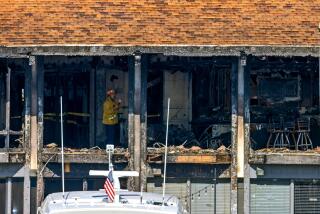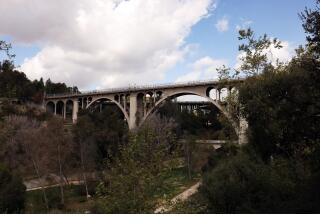LANDMARKS / COUNTY HISTORICAL SITES : Monument to Decades of Improvement
* History: When a new town grew up around the Oxnard brothers’ sugar beet factory, many residents of nearby Port Hueneme moved there, some even taking their homes with them. By 1909, the town they left behind had a ragged appearance, and the Women’s Improvement Club formed to change its image. The club building, constructed in 1914, was a gift of Mary
Bard, the wife of U. S. Sen. Thomas R. Bard, who is considered the founder of Port Hueneme.
* Location: 239 E. Scott St., Port Hueneme.
* Hours: Contact the Ventura County Cultural Heritage Board for tours.
When trouble surfaced in Port Hueneme during the early part of this century, the Women’s Improvement Club took it on.
In 1910, members addressed problems such as graffiti and wandering horses and cows that damaged public sidewalks, fences and plants in the plaza.
In those days, said current club President Patti Bowling of Oxnard, “Hueneme was a bawdy place with lots of bars. . . .” Club members brought the town its first library, dancing lessons for young people and the first tennis court in the county.
Over the years, the club adopted many other causes, including sponsoring a bond issue to build the harbor at Hueneme in 1926 and launching fund drives to collect goods for Red Cross units during World War II.
Dowling said the city fills most of Port Hueneme’s physical and cultural needs, and the current membership of 27 supports the Miracle House project for drug recovery in Ventura and Oxnard.
Meetings are still held in the building, one of the few California bungalow-style structures still standing in Port Hueneme. As well as having been designated a county landmark, the building has been named to the National Register of Historic Places.
The clubhouse was remodeled in the 1930s. A stone wall that separated the library from the meeting room was removed, and the stones were used to build a large fireplace on the east wall. At that time, the library collection was donated to the city’s first public library.
The historic tennis court, in use until the 1950s, is preserved behind the building.
More to Read
Sign up for Essential California
The most important California stories and recommendations in your inbox every morning.
You may occasionally receive promotional content from the Los Angeles Times.









